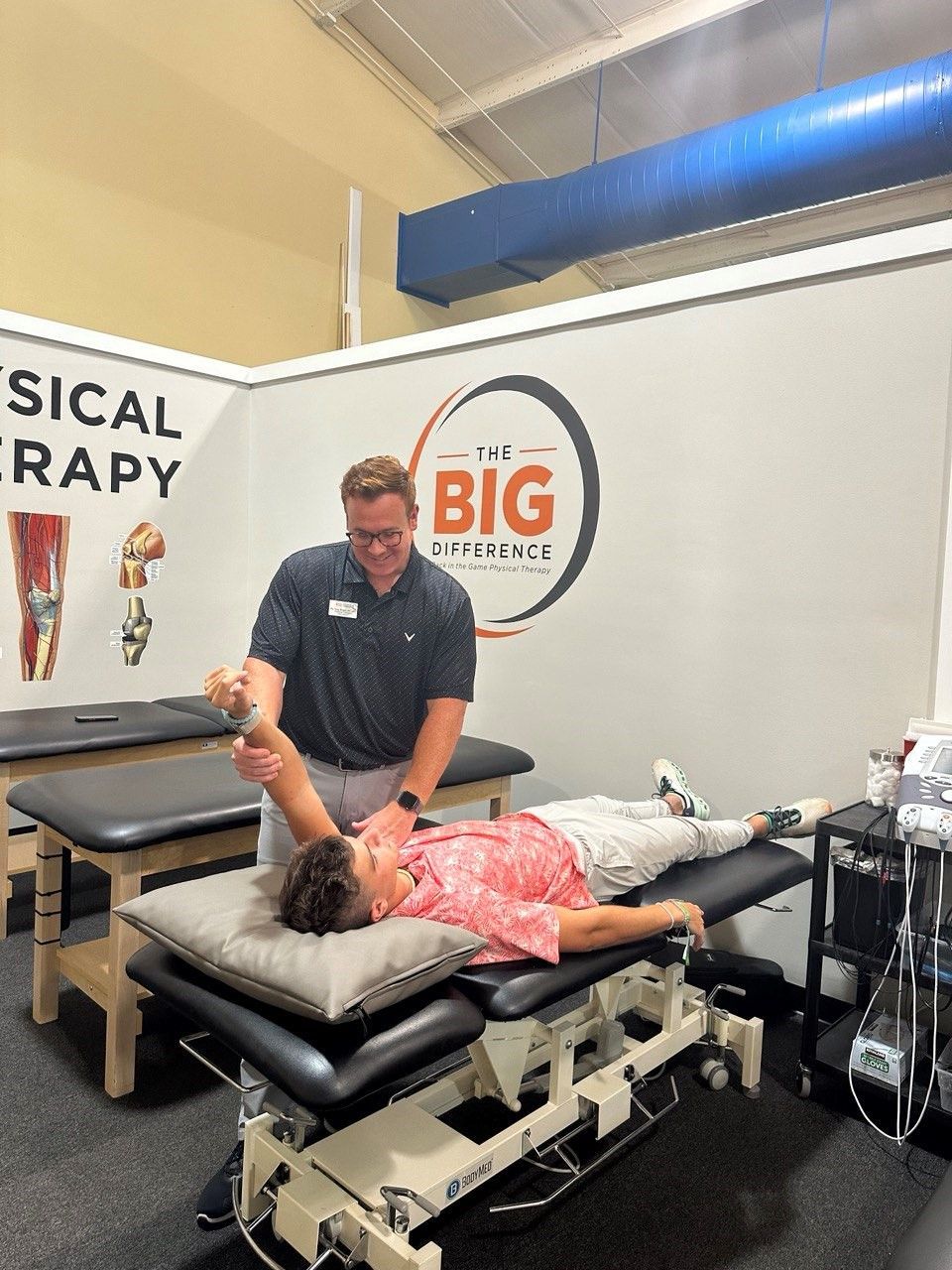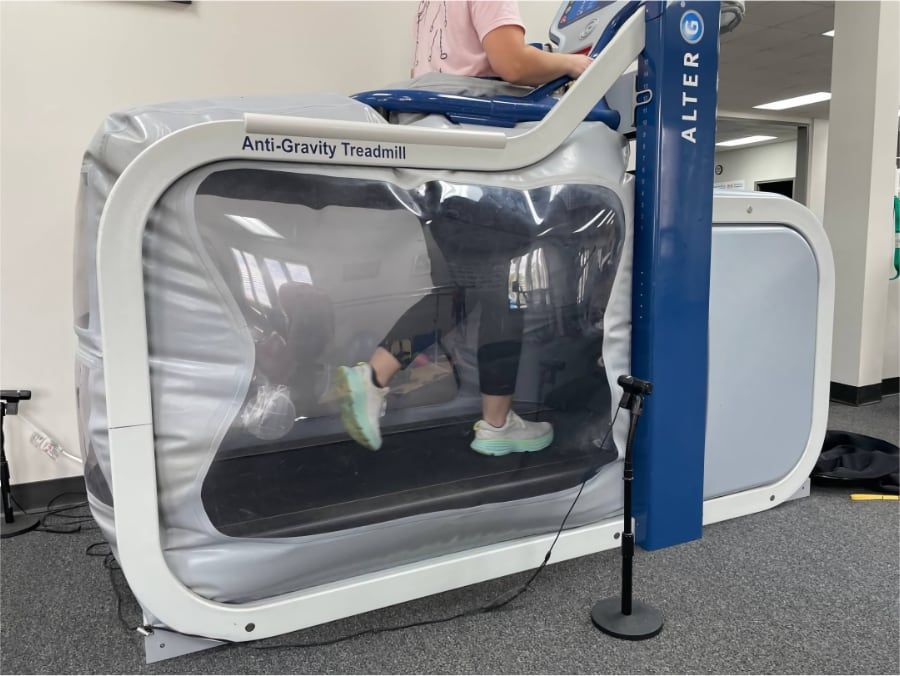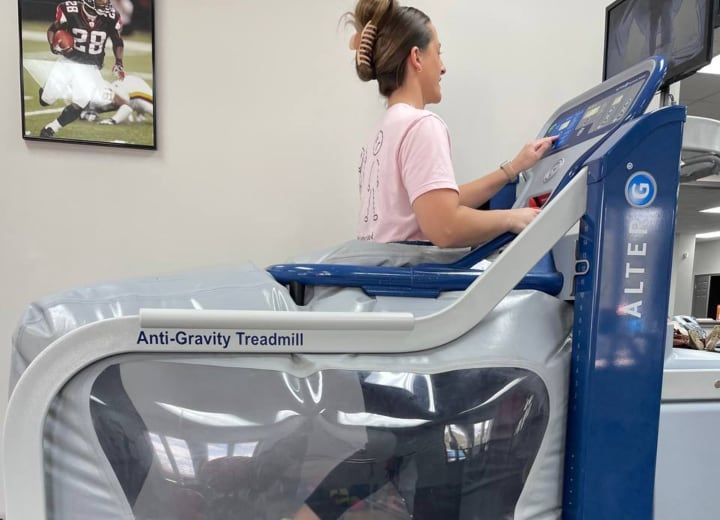5 Most Common Swimming Injuries
Written by: Trey Short
Swimming is a low-impact activity, and it's widely recommended for people who are recovering from sports-related injuries. That being said, there are still injuries that can occur while you're in the pool.
At Back in the Game Physical Therapy, our team understands the musculoskeletal issues that can occur in swimmers, and we're here to help! Let's take a look at some of the most common swimming injuries we see in our office—and what you can do to prevent them.
1. Swimmer's Shoulder
The most common injury among swimmers is a
shoulder injury, which develops due to inflammation or tears in the shoulder muscles and tendons.

This is often caused by repetitive overhead motion of the arms, poor technique, or general overuse. Symptoms can include pain, swelling, and a decreased range of motion in the affected shoulder.
How to Prevent Shoulder Injuries from Swimming
In order to prevent swimmer's shoulder, it's important to ramp up your training gradually, as diving headfirst into a strenuous routine can put you at greater risk for the condition. Performing mobility exercises regularly to support the range of motion in your shoulder can also help.
Treatment for Swimmer's Shoulder
Modification is one the key’s for healing swimmer's shoulder. Your physical therapist may work with you to strengthen your rotator cuff muscles (these muscles stabilize the shoulder joint) using external and internal rotation exercises. You'll likely also work on scapular stabilization—strengthening the muscles around the shoulder blades to help stabilize your shoulder. Your physical therapist might also provide you with a range of motion exercises that you can perform in your sessions and at home.
2. Swimmer's Back
In certain strokes—like the butterfly—the back can hyperextend, resulting in pain and stiffness (especially in the lower back). Causes can include excessive arching of the back, a lack of core strength, and poor technique.
How to Prevent Back Injuries While Swimming
Strengthening exercises—including pull-ups, deadlifts, and rows—can help to build and support your posterior chain, reducing the likelihood of straining your back. It's important to balance back exercises with core exercises to develop a strong and balanced midsection.
Treatment for Swimmer's Back
Physical therapy can help to address areas of weakness in your back with back-strengthening exercises. Your physical therapist may also talk with you about core strengthening exercises, as a strong core can help support your back, both helping you heal and preventing future injuries.
3. Swimmer's Ear
This infection of the outer ear canal is caused by prolonged exposure to water. Symptoms of swimmer's ear can include pain, itching, redness, and discharge from the ear.
How to Prevent Swimmer's Ear
There are several ways that you can prevent swimmer's ear, including using earplugs while you're swimming, drying your ears well once you get out of the pool, and using drying eardrops if you spend a lot of time in the pool.
Treatment for Swimmer's Ear
Typically, antibiotics are required to successfully treat a swimmer's ear infection. Your doctor will examine your ear and talk to you about your symptoms to determine whether antibiotic treatment is necessary. While you're waiting for the antibiotics to kick in, it's important to keep the ear dry and avoid inserting objects (including cotton swabs) into the ear canal.
4. Swimmer's Knee
Swimming is known for being easy on the knees—but this isn't always the case. The repetitive frog kick motion in the breaststroke can cause pain in the knee due to stress on the medial collateral ligament, or MCL. Symptoms include pain, swelling, and tenderness in the knee.
How to Prevent Knee Injuries While Swimming
Strength training that works the muscles around your knees—including squats, lunges, and leg presses—can reduce the likelihood of swimmer's knee. Working with a swim coach can also be helpful in perfecting your technique and lowering the likelihood of developing knee problems.
Treatment for Swimmer's Knee
Modification is one of the key’s to allowing your knee to heal, making adjustments to your swimming routine once you're back in the pool. If you're usually a breaststroke swimmer, switch it up by adding freestyle or backstroke laps into your routine. Working with a physical therapist to expand your range of motion and strengthen the muscles around the knee can also help you heal.
5. Neck Injuries
It's easy to get into the habit of straining your neck while you're swimming, especially in the freestyle and backstroke. Unfortunately, straining your neck can cause pain and stiffness. Swimming-related neck injuries are usually caused by improper breathing techniques or excessive head movement.
How to Prevent Neck Injuries While Swimming
Using a bilateral breathing technique can help to reduce the risk of neck injuries while swimming. Regularly stretching your neck, shoulders, and upper back can also help to increase your range of motion, possibly preventing the development of neck pain.
Treatments for Neck Injuries
A combination of activity modification, pain management, physical therapy, and lifestyle adjustments can work well to help heal a swimming-related neck injury. Your physical therapist may walk you through gentle stretches, strengthening exercises, and posture training to reduce strain on your neck while you heal. Manual therapy performed by a physical therapist, to improve how well your neck is moving, may be necessary.
Splash Back into Action! Our Physical Therapists are Ready to Help You Recover. Schedule Your Visit Today!
Whether you're a competitive swimmer or you're just getting started with hitting the lap pool, the team at Back in the Game Physical Therapy is here to help. We'd love to talk with you about how we can help you feel your best, in and out of the pool. Reach out to our team today to learn more and schedule your first appointment. We'll see you soon!
About the Author
Trey Short
Clinic Director in Gainesville
Specialties: Orthopedic injuries, blood flow restriction
Certifications: Dry needling, spinal manipulation, champion performance specialist (C-PS)
Location(s): Gainesville, GA
Contact
Request an appointment






